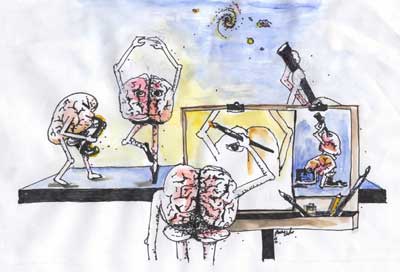
From Serendip
SCIENCE AS EXPLORATION INSTITUTE 2001

 From Serendip | SCIENCE AS EXPLORATION INSTITUTE 2001 | 
|
![]()
An example of inquiry into pinhole optics
David L. Smith
Associate Professor of Geology, Environmental Science, and Physics
La Salle University, 1900 W. Olney Ave., Philadelphia, PA 19141
dsmith@lasalle.edu http://www.lasalle.edu/~dsmith
Schedule for the Module:
Introductory Thoughts
Pinhole viewers are a classic science activity and examples abound in print and on-line resources. Many of these, however, are pretty stale. You make a pinhole viewer according to the directions and you look through it and see some somewhat fuzzy images. So far, so what? What I hope to show you this morning is how a classic activity such as this can be turned into a true inquiry. I had already begun working down this path when I discovered the brilliant web site of the Institute for Inquiry at San Francisco's Exploratorium (probably the best hands-on science center in the world).
http://www.exploratorium.edu/ifi/
They have turned pinholes into a two-day inquiry workshop for teachers. What I do in my class of education majors, and what I will do this morning, is a scaled-back version of that inquiry. (The full version is available here.) We will not have enough time to pursue all of the questions that come up, nor would we, even if we did take two days. As we work, I will also be asking you to reflect on your experience of the inquiry. I ask you in advance to pay attention not only to what you see, but also to your reactions to what you see and what you are asked to do.
One other thing to note, this is a very low-budget activity. The durable equipment was built from less than $100 in materials in two evenings. The expendable supplies that we will use total $10-20. All the materials came from well-known science suppliers such as Home Depot, Staples, Wegmans (grocery), and A.C. Moore.